Notes on Jeff Emmett's Rewriting the Story of Human Collaboration (Or, an Introduction to Token Bonding & Curation Markets)
https://blog.goodaudience.com/rewriting-the-story-of-human-collaboration-c33a8a4cd5b8
Key claim: DAOs are a new form of decentralized human collaboration
In the below presentation, I will discuss a new (and experimental) form of decentralized human collaboration — the curation market, how we can structure our economic incentives to more closely resemble stable networks found in nature, and how these cryptoeconomic primitives form the building blocks of a new cooperative framework for global action that can be used to solve the world’s biggest problems.
Summary
We have wicked problems which relate collective coordination problems (e.g. climate change)
Natural systems display complex behaviour based on interaction of agents following simple rules (e.g. ants following a trail, murmurration of birds etc) [Ed: and ... markets with human beings - which he notes a few paragraphs later]
How can we create value signals in human networks to direct collaborative action without central authority?
How can we create value signals in human networks to direct collaborative action without central authority?
- Already exists with capitalism and markets
- How can we utilize market forces for the common good?
[Ed: note this is a great question and a very old and hard one. Most of human institutional innovation for a few thousand years or more relate to this question. It's a hard, hard problem with a huge associated literature.]
For first time can decentrally fund global projects and reward individual actions towards that goal without top-down organized leadership
For the first time even we can decentrally fund important global projects and reward individual actions carried out to help that goal without top-down organized leadership
- Like a charity of NGO but without the bureaucracy
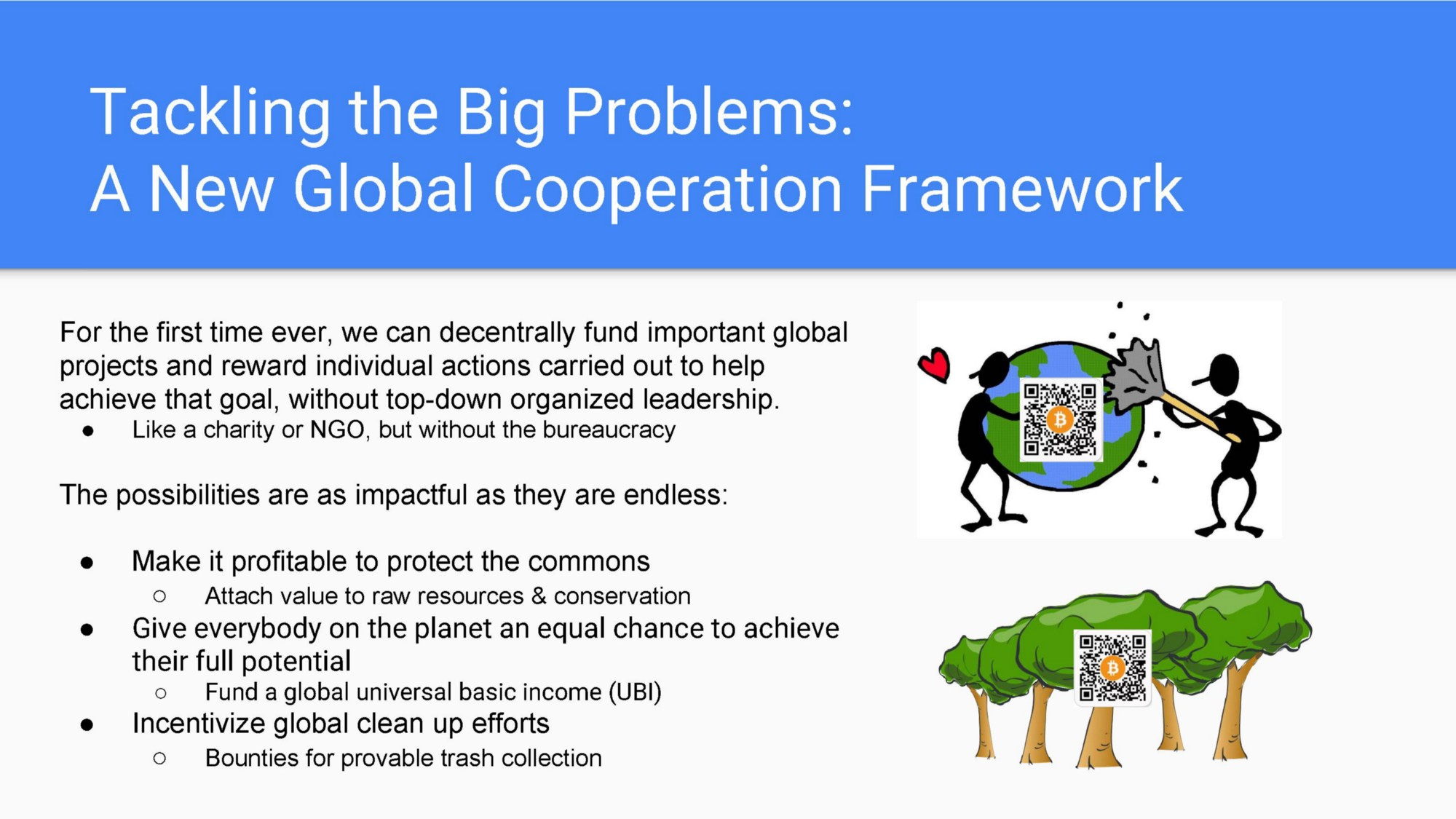
🚩 This is a confusion of fundraising and allocation problems
This seems a basic confusion (and an "intellectual sleight of hand" - no doubt accidental): it confuses allocation and fund-raising aspects: just because we can do allocation decentrally doesn't mean we can raise the funds decentrally!
How is the allocation model able to solve the fund-raising?
As we will say this problems is basically unsolved in what follows.
Very similar to the issues with the claims made by Gitcoin's Kevin Owicki
#TODO: move to notes and link.
The model he describes is as follows
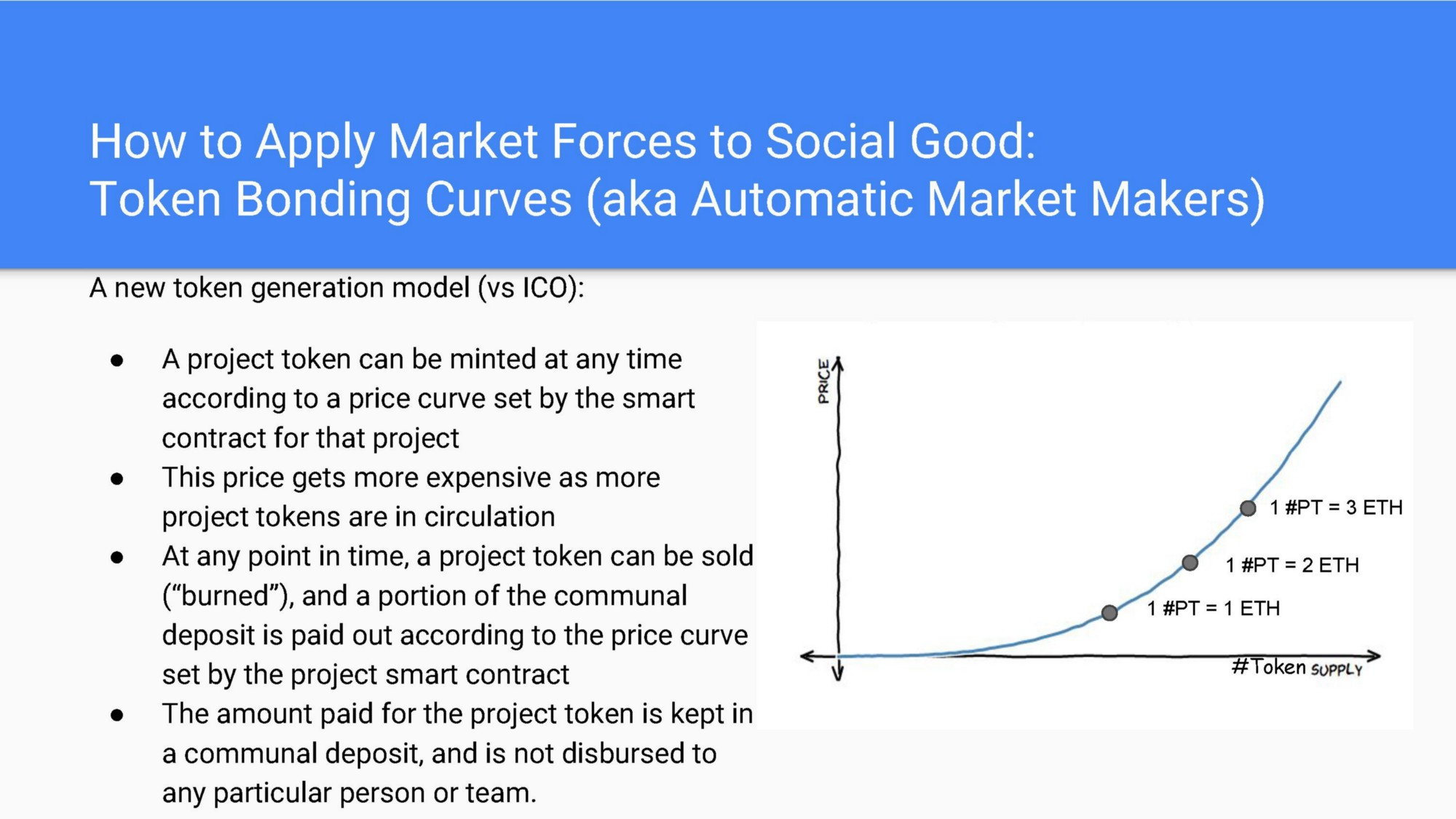
Then we have an an application example that he walks us through
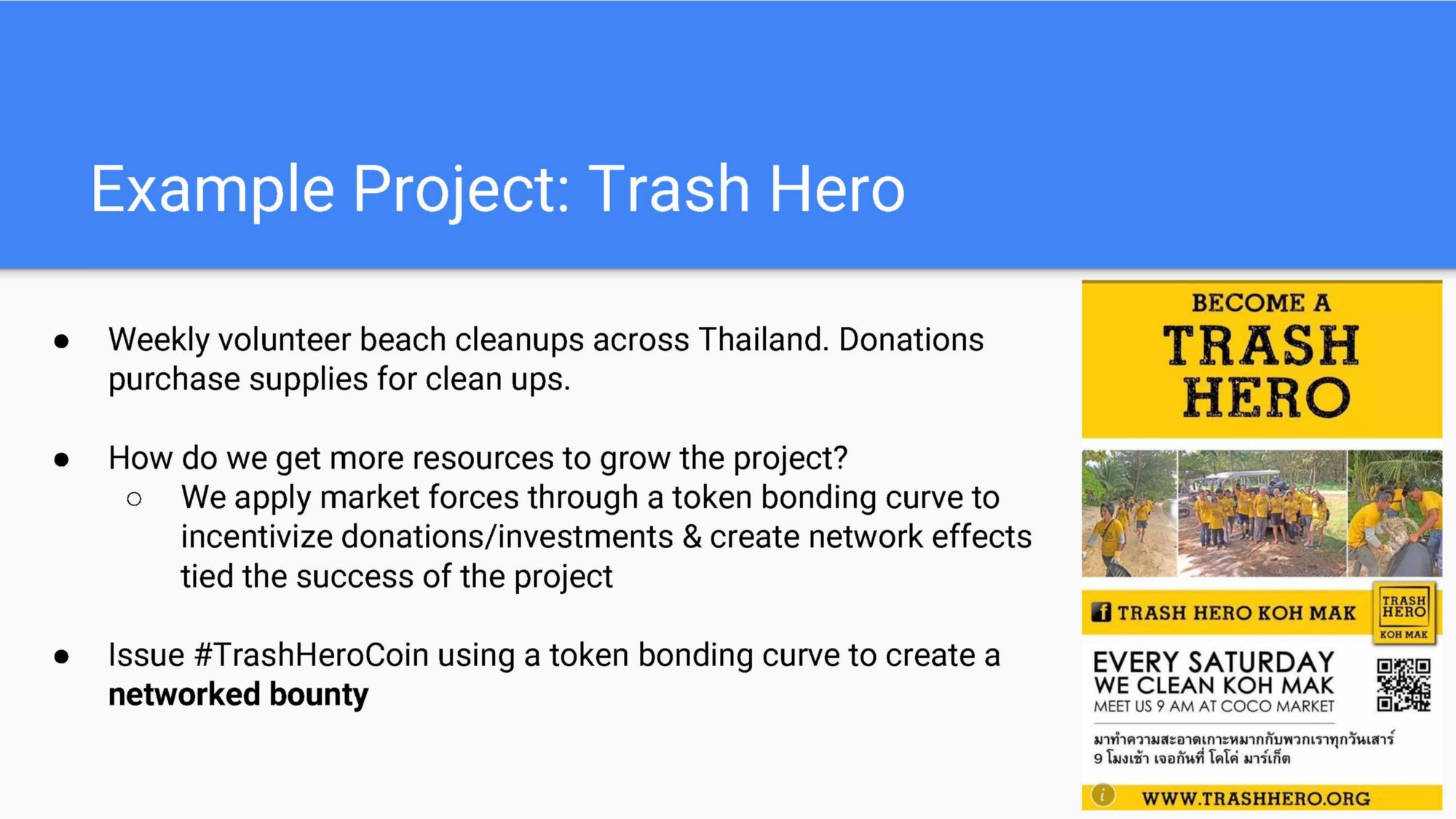
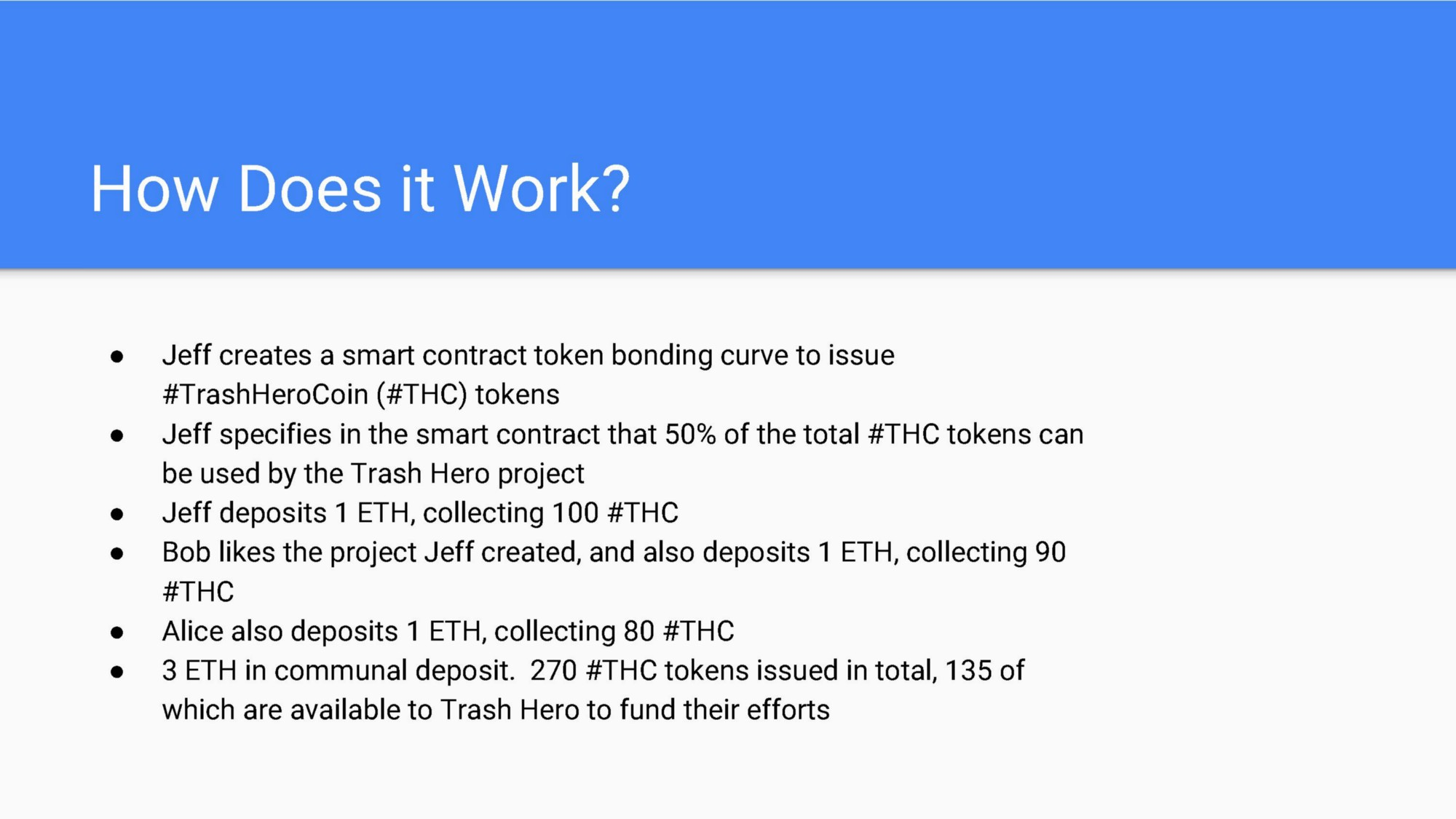
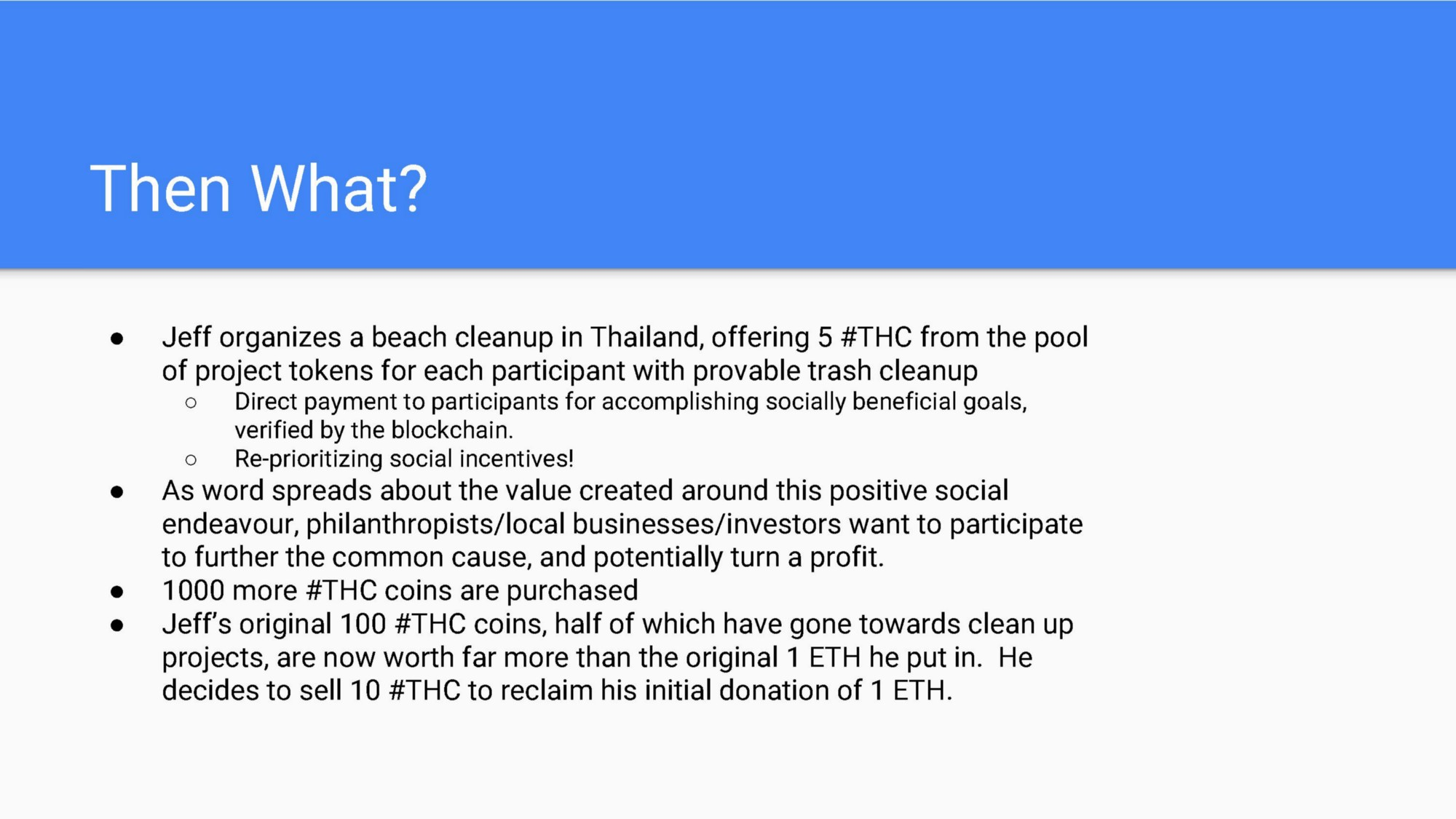
And finishes with:
In some future scenario, the beaches in Thailand may have been cleaned up in large part, so fewer donations are needed. As #THC tokens are sold, their value decreases according to the token bonding curve, and the donation network smoothly winds down to a smaller level of operation, commensurate with its needs. (Granted, this could go many different ways depending on your sell curve properties — thus the importance of bonding curve parameters!)
Let's walk this through: it's either ponzi like (some people don't get paid back) or it runs on donations
- The only difference from classic donation is the weird possibility of speculative profit from the gradually rising payout value ...
- But given the zero sum aspect of in and out (ETH can't get created out of thin air) and the 50% allocation to the actual project this is only possible either with ponzi like mechanics where either people keep joining to pay out the early investors or the later "investors/donors" end up out of pocket (i.e. they just donate).
There is also no mention of how this is verified or governed
Either way it doesn't seem to solve the free rider problem and the funding of public goods
Though the example above is very basic, it shows some interesting properties. It encourages donations to successful causes, while also providing network liquidity for goal completion, and a potential investment opportunity for donors and project participants at the same time. A project able to bootstrap funding and token value along with project success and popularity, yet also remain light on infrastructure, with the ability to wind down gradually as a problem is resolved and the project requires less funding — that’s a powerful idea.
- How does it encourage donations to successful causes? (Or, at least any more than the current system?)
- The point that money can pay out is nice though one could build that into most existing orgs relatively easily (just track who contributed). It does note seem a very powerful or important idea.
Claims seem large against the backing analysis
The thing for me is how so many things are claimed with very little to back them up.
The true benefit of a model like this, however, would be opening up the ability to create these movements to absolutely anyone in the world, with permissionless, direct, incentivized global participation.
Wait a moment this is only true for the entity setup but includes none of the governance and distribution of funds.
Summary
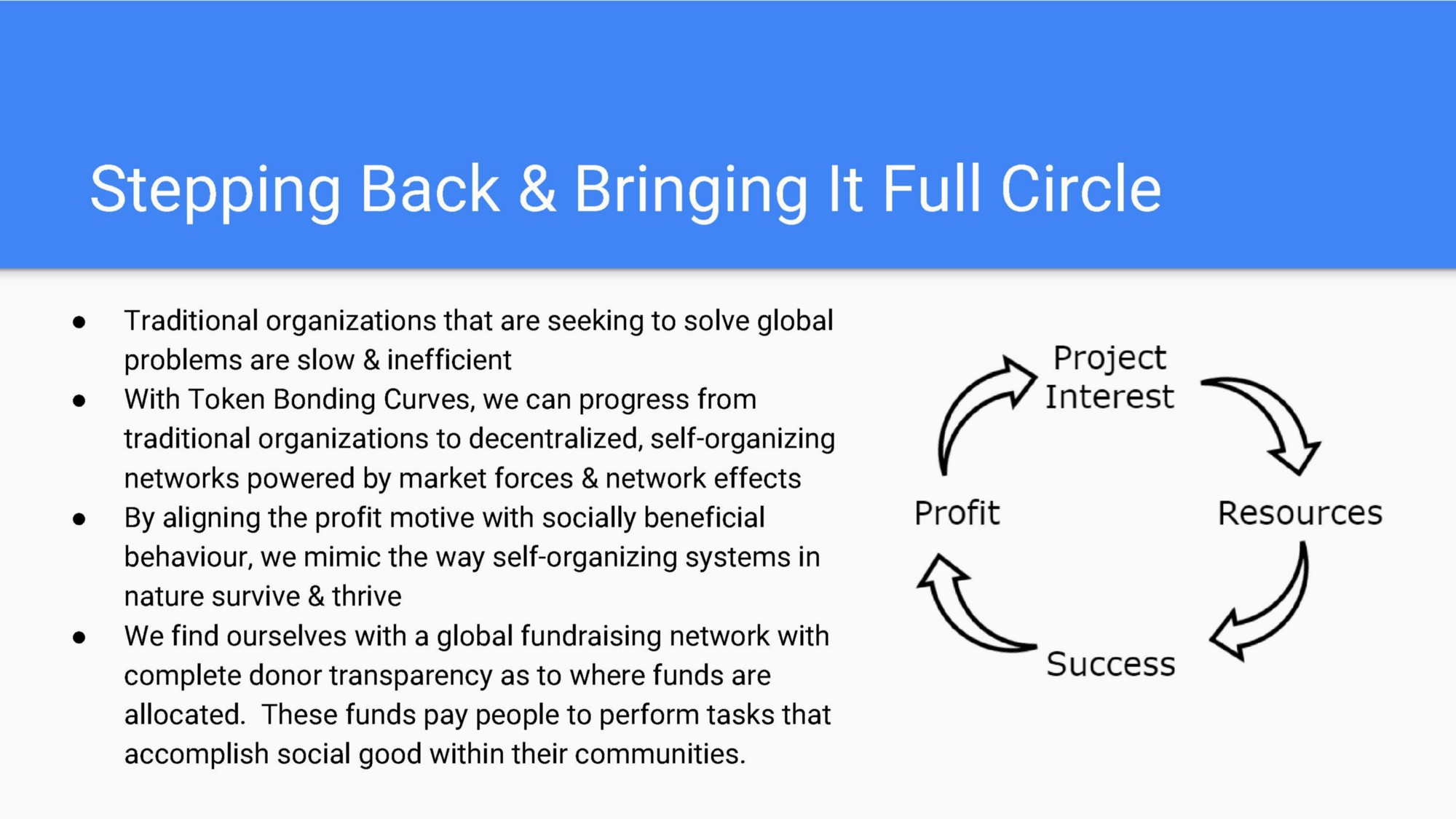
The critique (as often) is good: yes, traditional organizations are slow and inefficient. Also solving global collective actions are politically and socially very hard ...
But ... we haven't been shown how token bonding curves really help at all.
Asides
Market forces for fairness
Market forces prioritize good information, disincentivize bad actors
🚩 But information systems aren't markets or democracies ... and if they were, then simply building good informational voting systems would have been a solved problem years ago ...
[Ed: what's surprising is you have (what I believe) is a really progressive person making very market-fundamentalist arguments. It's like the American Enterprise Institute approach to solving the climate crisis ...]
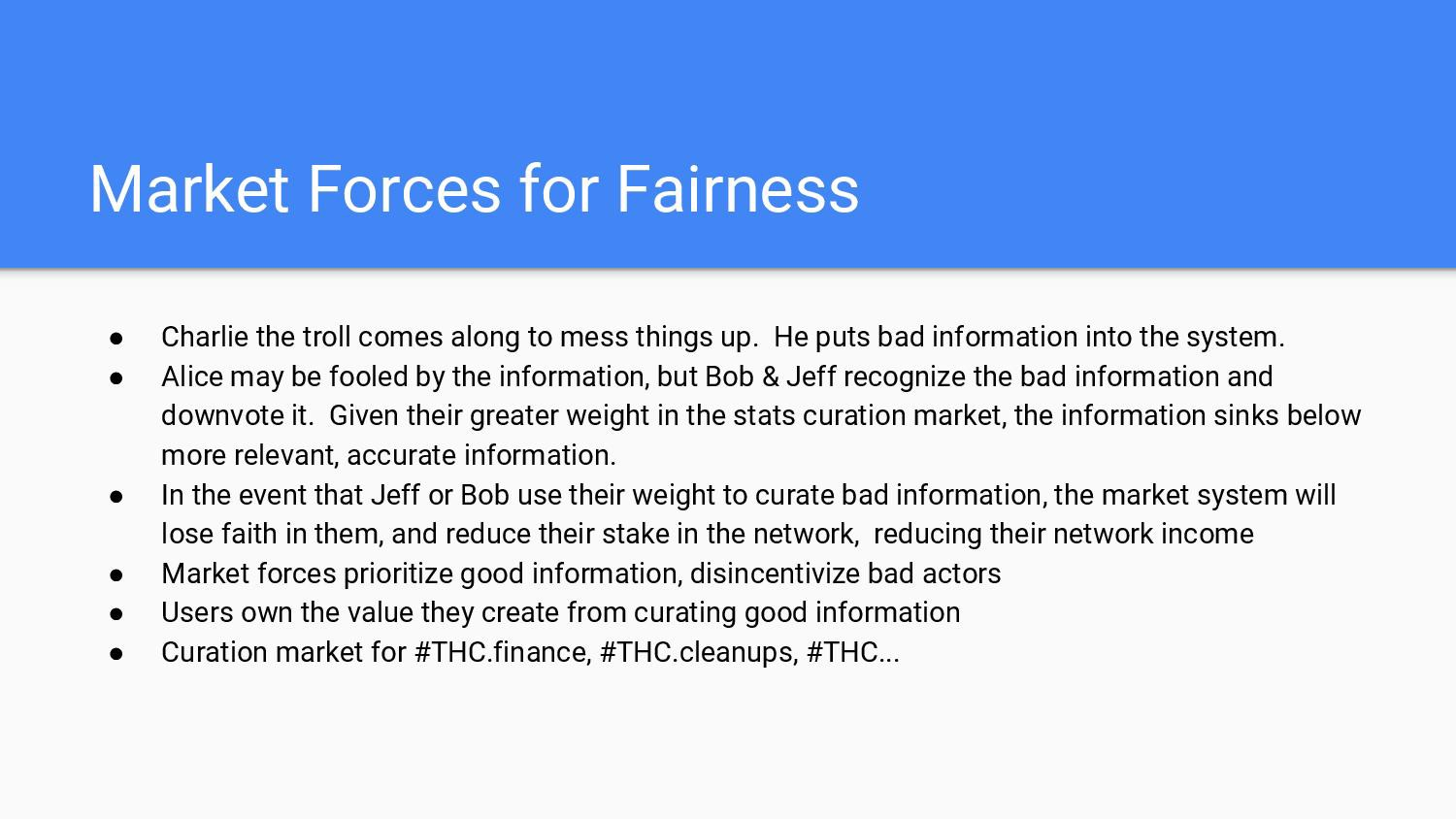
TODO
TODO: insert citation link